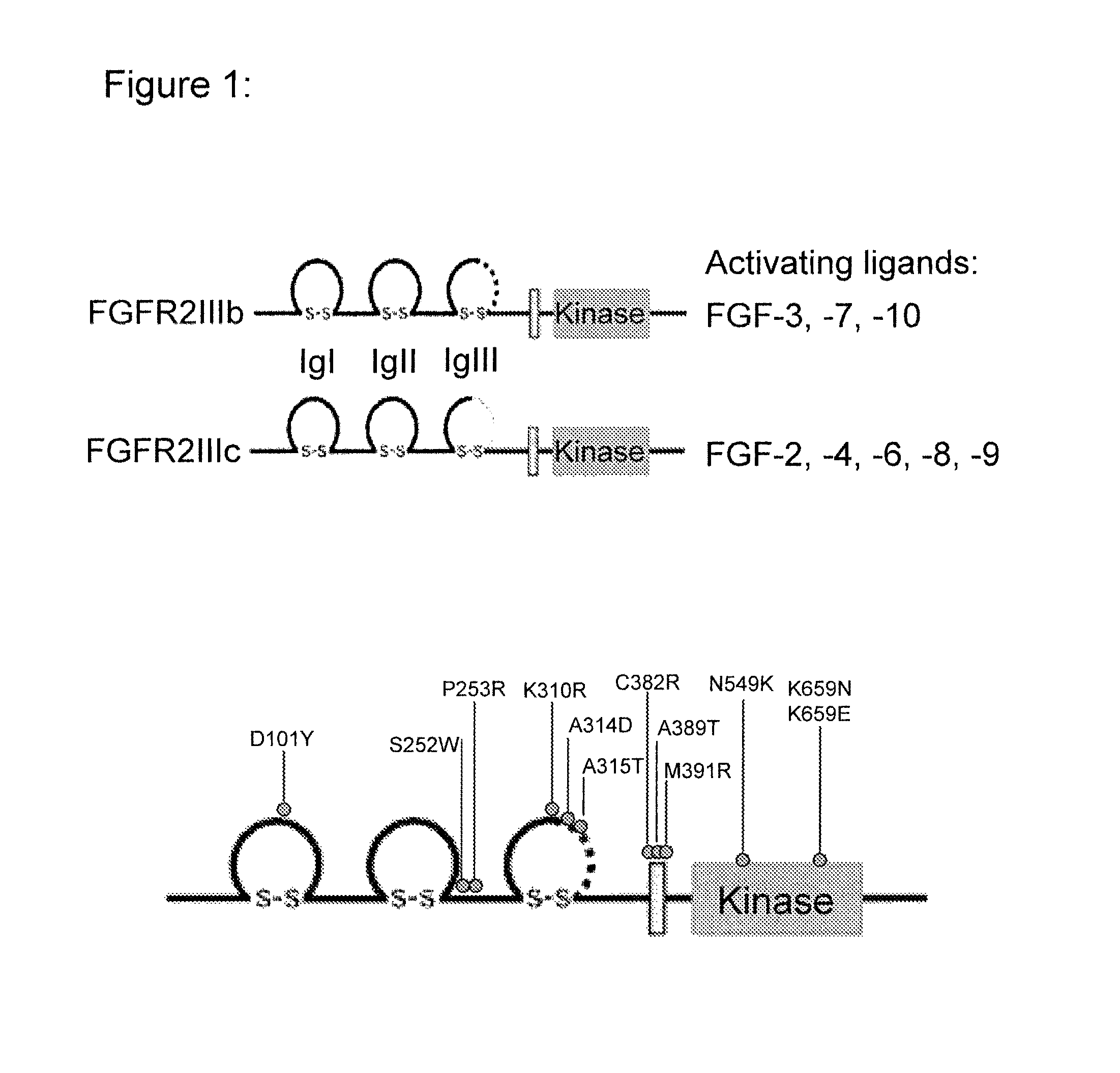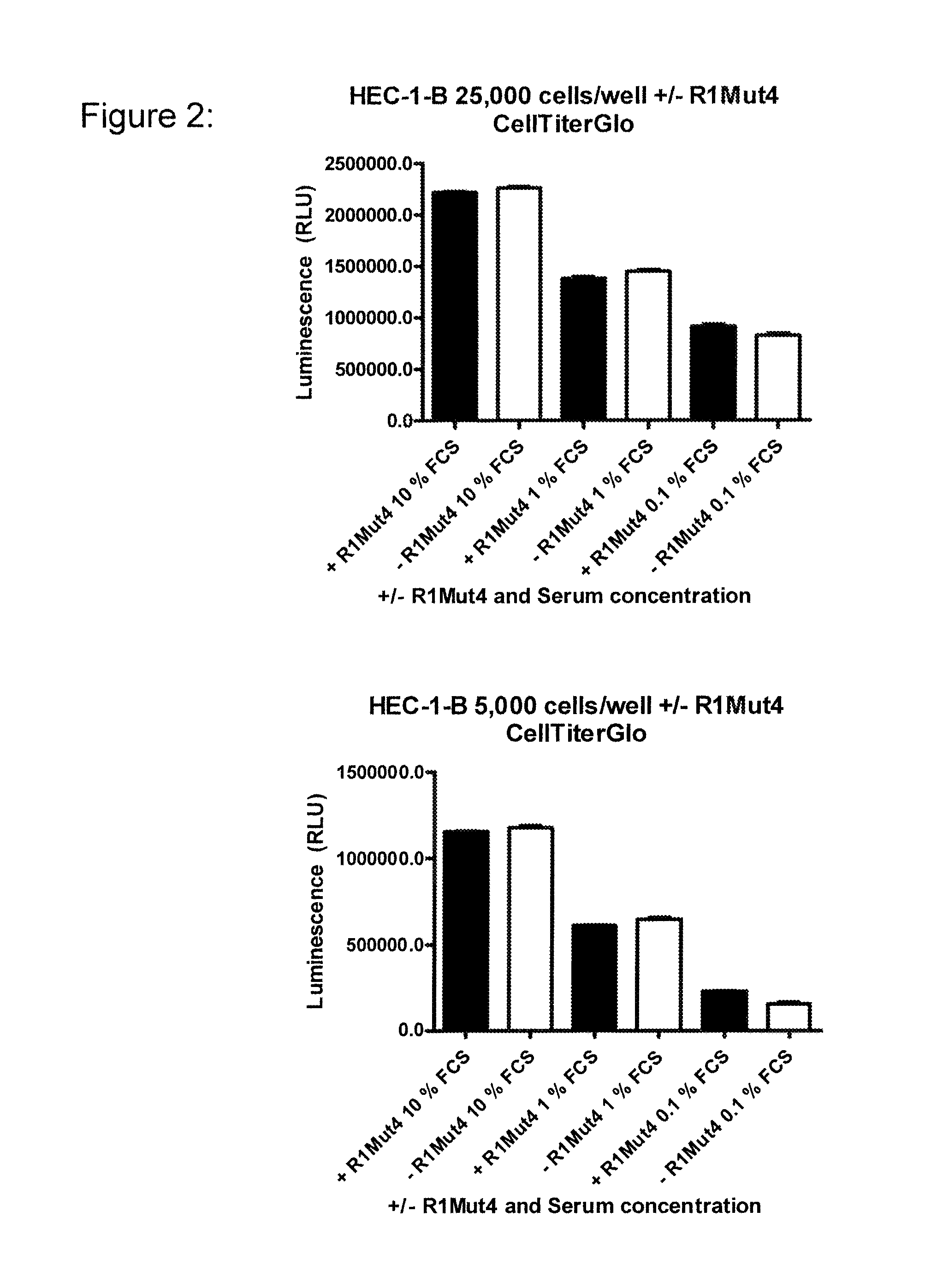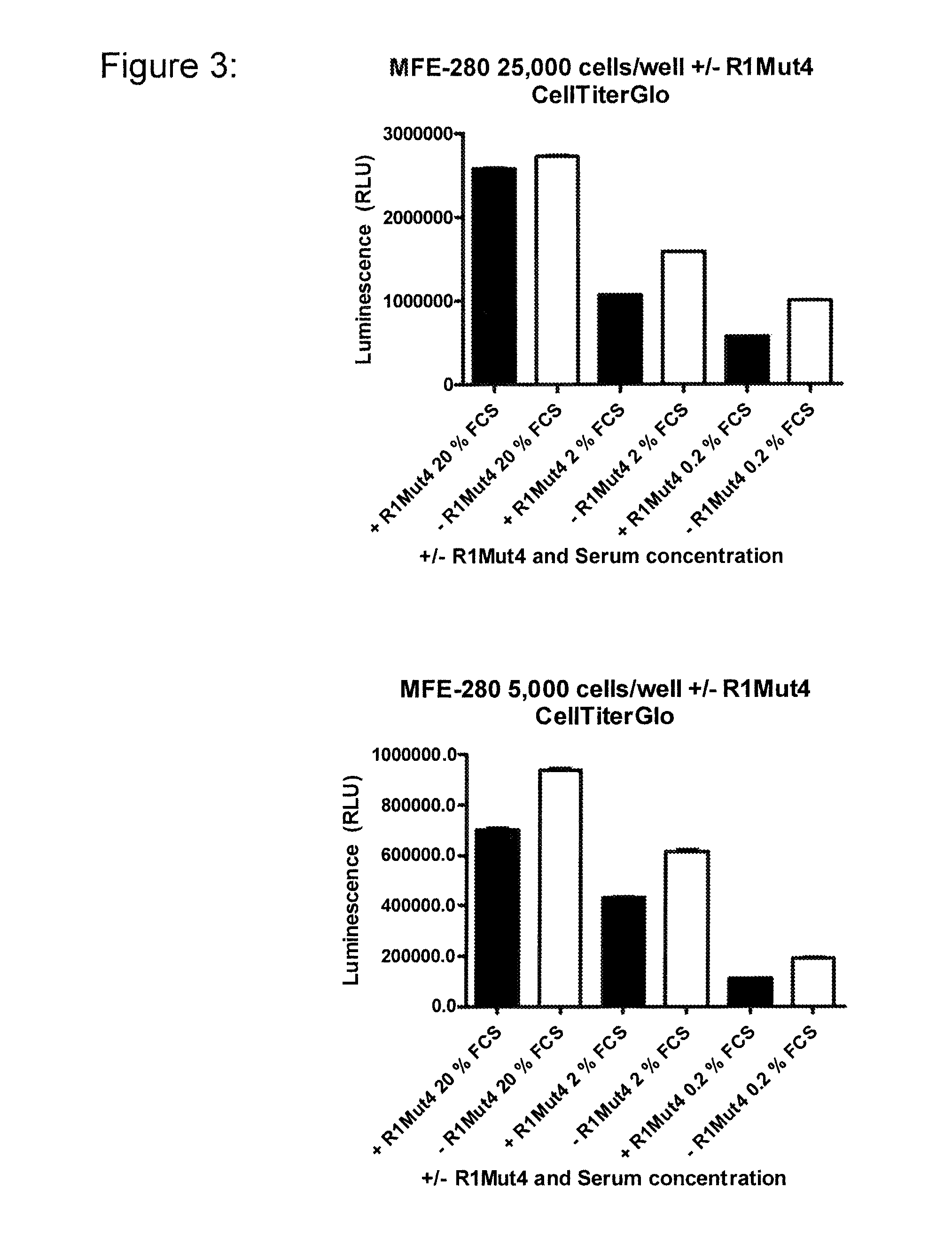Use of FGFR1 extra cellular domain proteins to treat cancers characterized by ligand-dependent activating mutations in FGFR2
a technology of fgfr2 and extracellular domain, which is applied in the field of fgfr1 extracellular domain (ecd) proteins for cancer treatment, can solve the problems of disrupting the splicing-based regulation of fgfr2 function, poor survival rate of patients whose cancer and poor survival rate of those who cannot be treated surgically. , to achieve the effect of inhibiting tumor growth and dramatic inhibition of tumor growth
- Summary
- Abstract
- Description
- Claims
- Application Information
AI Technical Summary
Benefits of technology
Problems solved by technology
Method used
Image
Examples
example 1
An FGFR1 ECD Fc Fusion Molecule Inhibits FGFR2 S252W Mutant Endometrial Carcinoma Cell Lines in Tissue Culture
[0109]The endometrial carcinoma cell line, HEC-1-B (Cat #HTB-113), encoding a wildtype genomic FGFR2 locus (Dutt et al. 2008; PNAS 105(25):8713-7) was obtained from American Type Culture Collection (ATCC; Manassas, Va.) and maintained in Minimum Essential Medium Eagle with Earle's balanced salt solution (ATCC) supplemented with 2 mM L-glutamine 0.1 mM non-essential amino acids, 10% fetal bovine serum (FBS; all from Mediatech, Inc. Manassas, Va.) and 1.0 mM Sodium Pyruvate (Sigma-Aldrich, Milwaukee, Wis.). Endometrial cell lines MFE-280 (DSMZ cat#. ACC 410) and MFE-319 (DSMZ cat#ACC 423) with a S252W mutation in the FGFR2 gene (Dutt et al. 2008; PNAS 105(25):8713-7) were obtained from Deutsche Sammlung von Mikroorganismen and Zellkulturen GmbH (DSMZ: Germany) and maintained in 40% RPMI 1640, 40% Minimum Essential Medium (with Earle's salts) supplemented with 2 mM L-glutamine,...
example 2
An FGFR1 ECD Fc Fusion Molecule Inhibits Endometrial Tumor Growth in an FGFR2 S252W Murine Xenograft Model
[0114]The anti-cancer activities of R1Mut4 were tested in a xenograft endometrial cancer model using human endometrial carcinoma MFE-280 cells with a S252W mutated FGFR2 genomic locus. MFE-280 cells were maintained in 40% RPMI 1640, 40% Minimum Essential Medium (with Earle's salts) supplemented with 2 mM L-glutamine, 20% FBS (all from Cellgro) and 1×ITS (Insulin, Transferrin and Sodium Selenite, from Sigma) at 37° C. in a humidified atmosphere with 5% CO2. Semi-confluent cells (˜80%) were re-suspended in PBS without calcium and magnesium (Cellgro) at a concentration of 1×108 cells per ml. Matrigel basement membrane matrix (BD Biosciences) was added to 50% (vol / vol) to give a final concentration of 5×107 cells per ml and the mixture stored on ice until implantation into mice.
[0115]For the xenograft experiments, twenty CB17 SCID mice (Charles River Laboratories) were used. On day ...
example 3
An FGFR1 ECD Fc Fusion Molecule Inhibits Endometrial Tumor Growth in a Therapeutic FGFR2 S252W Murine Xenograft Model in a Dose-Dependent Manner
[0121]The dose-dependent anti-cancer activities of R1Mut4 were tested in a therapeutic (or established) xenograft endometrial cancer model using human endometrial carcinoma MFE-280 cells with a S252W mutated FGFR2 genomic locus. MFE-280 cells were maintained as outlined in Example 2. For the xenograft experiments, forty CB17 SCID mice (Charles River Laboratories) were used. On day 1 mice were shaved on the right hind flank and then inoculated subcutaneously with 5×106 (100 μl) of the MFE-280 cells prepared as described in example 1. Following implantation tumor sizes were measured every 3 days until tumors reached the size of 150-200 mm3 (average day 28 post-tumor implantation). The mice were then randomly distributed into 4 groups of 10 mice based on their body weight and tumor size. Animals were dosed with the test articles according to th...
PUM
| Property | Measurement | Unit |
|---|---|---|
| affinity | aaaaa | aaaaa |
| structure | aaaaa | aaaaa |
| domain structure | aaaaa | aaaaa |
Abstract
Description
Claims
Application Information
 Login to View More
Login to View More - R&D
- Intellectual Property
- Life Sciences
- Materials
- Tech Scout
- Unparalleled Data Quality
- Higher Quality Content
- 60% Fewer Hallucinations
Browse by: Latest US Patents, China's latest patents, Technical Efficacy Thesaurus, Application Domain, Technology Topic, Popular Technical Reports.
© 2025 PatSnap. All rights reserved.Legal|Privacy policy|Modern Slavery Act Transparency Statement|Sitemap|About US| Contact US: help@patsnap.com



